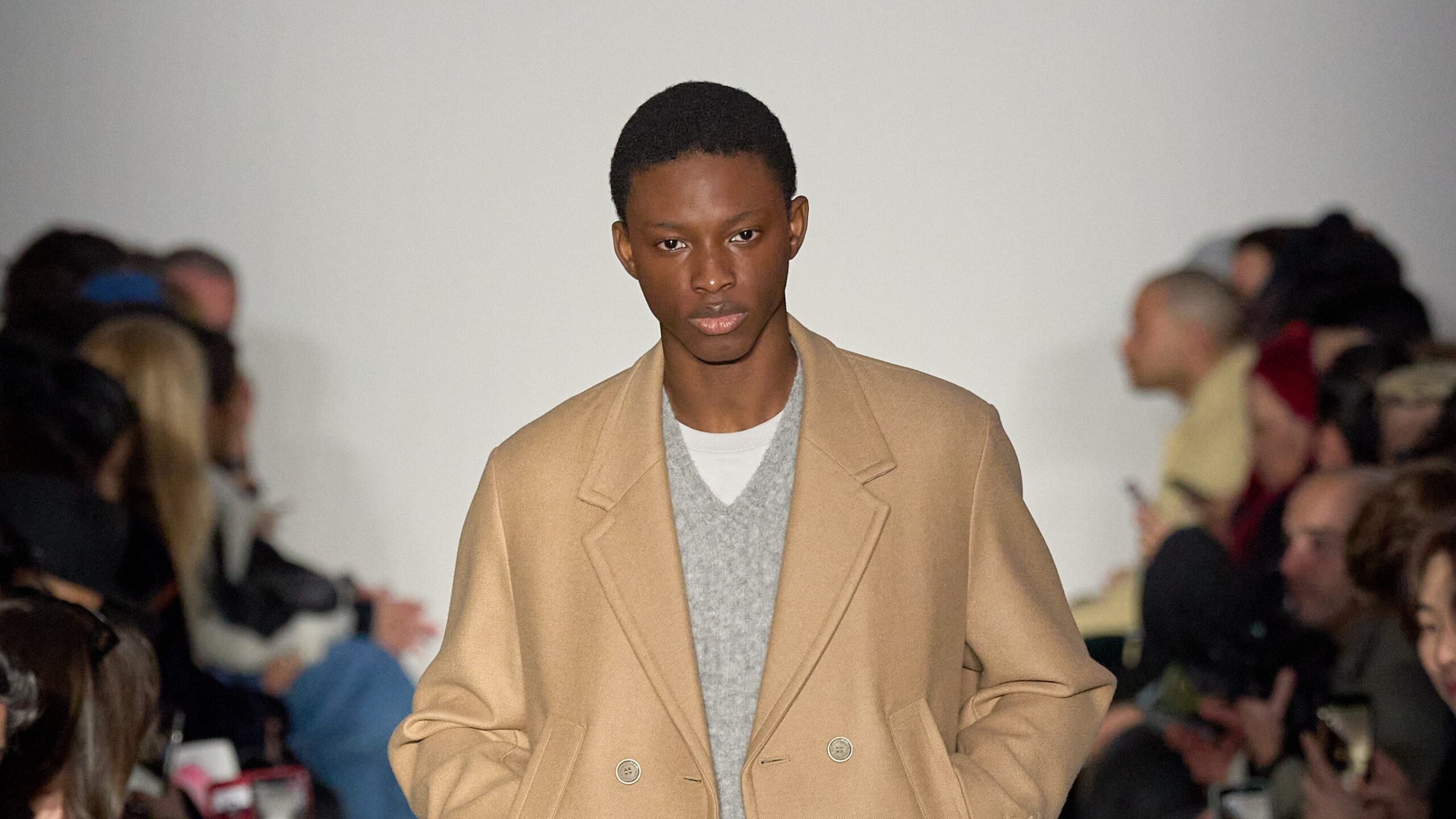Neil Barrett’s elevator pitch for this collection was The Duke of Devonshire meets The Thin White Duke. He said: “It’s about a character who is modern and completely engaged in the contemporary yet who also has an understanding and respect for what came before: heritage and tradition.” The result was a collection of clothing that, through subtle modernizations of cut, detail and fabric, allowed you to dress with an old soul but a young spirit.
Beautiful wool crombie-style coats, old school, came with atypical diagonal pockets at the hip, enabling a more freewheeling posture within the apparently formal. Padded coats and super-soft blousons and adapted country coats were either cut in water-repellent “techno-tweed” or a lustrously soft avatar of Harris Tweed (but Made In Italy). Long wool pants were cinched at the ankle by velcro tabs and poppers, an idea sourced in hunters’ plus fours but just as useful when wanting to display your latest footwear grail.
A really great piece was the updated duffle coat in brown or black cut in high-volume but ultralight padded nylon. It came with the cordage and walrus-tusk fastenings (nb: that’s just the traditional name—no walruses were harmed) attached to inserted pads that looked like pieces of moto-protection. This was a mash-up of multiple parts that resulted in something distinct and apparently wonderful to wear.
There were other details less linked to that central push and pull between trad and rad, but which were also powerfully wantable: minutely tapered mid-wale corduroys in off-white or plum (always a great color co-ord in cords) came equipped with excellently adapted carpenter’s tool pockets south east of the right glute. As Barrett noted, that pant style is currently in its closest orbit to currency after a long languish in the wilderness. Elbow patches were pulled forward onto the forearm, while knits came in a patchwork of traditional patterns fragmented then put together.
By dancing between the north and south of old and new, the contrast between formal and informal—which is so last century, yet still so categorically ingrained—seemed barely there. Instead Barrett was creating space to allow attitude, not genre, to define his customers’ style.
